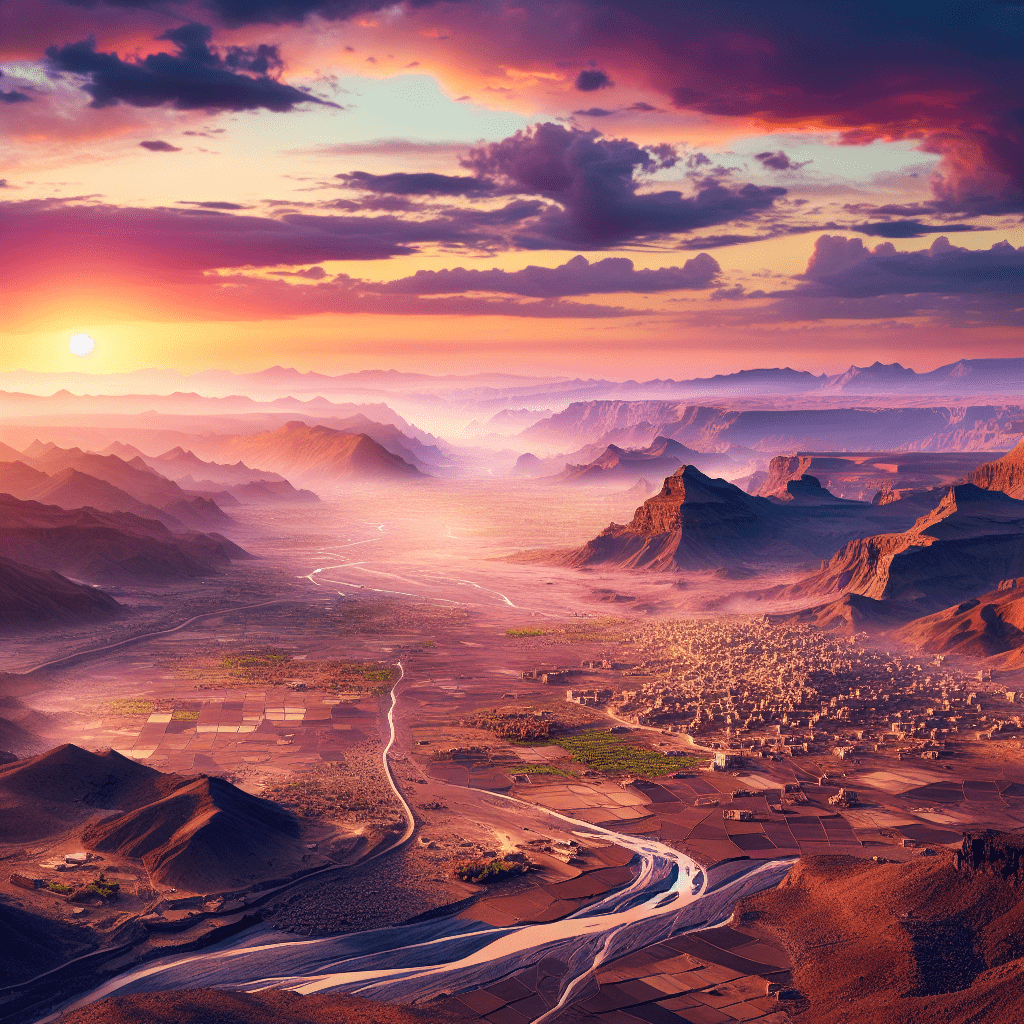Introduction
Yemen, officially known as the Republic of Yemen, is a country located in the southwestern part of the Arabian Peninsula. It borders Saudi Arabia to the north and Oman to the east, while the Red Sea, the Gulf of Aden, and the Arabian Sea cradle it from the west and south. The Republic of Yemen was established in 1990 when North Yemen and South Yemen merged to form a unified state. Yemen’s rich history, cultural vibrancy, and economic potential are often overshadowed by its ongoing bloody conflict which has escalated since 2015, causing severe humanitarian crises and death tolls. This article will explore Yemen, from its physical geography and demographics to its cultural heritage and current economy. We will also delve into Yemen’s long-standing political issues, with particular attention to the ongoing civil war and its ramifications.
Geography
Yemen’s geography is diverse, encompassing coastal plains, mountainous regions, and desert landscapes. The western Red Sea coast yields fertile plains while the southern edge of the country is adorned by a narrow coastal plain. Inland, the centrally located mountains, with elevations reaching over 3,000 meters, spectacularly rise amidst the desert. Eastwards, the geography mellows into vast desert regions. This diverse topography contributes significantly to Yemen’s climate variation, with a relatively humid coastal climate, temperate conditions in the mountains, and arid desert climate in the east.
Demographics
Yemen has a population of approximately 28 million people. Most Yemenis live in rural areas, with agriculture constituting a primary means of subsistence, despite the limited amount of arable land. The primary language spoken is Arabic, and Islam is the dominant religion, with the majority of citizens subscribing to the Sunni or the Zaidi Shia sects.
Culture and Heritage
Yemen has a rich cultural heritage, steeped in centuries-old customs and traditions. Yemen is home to four UNESCO World Heritage Sites, testimony to its historical and cultural significance. Authentic Yemeni cuisine, especially its famous flatbread, various stews and the usage of spices, mirrors the intricate culture of the country. Poetry and folk music are popular cultural mediums among Yemenis, with traditional Yemeni dances like bar’a also playing an enduring part in their cultural landscape.
Economy
Yemen’s economy primarily revolves around the oil and gas industry. Oil earnings constitute the largest portion of the government’s revenues and play a decisive role in the national economy. However, depletion of oil resources and the ongoing conflicts have severely affected the economic affluence. Agriculture, services, particularly in telecommunications, and remittances from expatriate workers form other essential parts of the economy. The relentless conflict and the ensuing humanitarian crisis have, however, inflicted colossal damages on the economy.
Political Issues and Civil War
In 2015, already fragile Yemen was thrown into a deadly civil war with the onset of the Houthi rebellion against the internationally recognized, Saudi-backed government. This complex and multi-faceted conflict has had catastrophic effects on the entirety of Yemen, increasing poverty, famine, and disease outbreaks.
Notes
Image description
The image is an overview of Yemen’s unique topography with its mountainous central region standing in stark contrast to the vast desert landscapes. Spectacular valleys crisscross the scene, testifying to the agricultural potential amidst the harsh environment. Small clusters of traditional houses made from mud-bricks dot the landscape. Against the backdrop, a rising sun paints the sky with hues of orange and mauve signaling dawn’s arrival over the war-torn nation.
